Medieval Clothing
Materials
Colours
Medieval Clothing: A Thousand Years of Fashion
Medieval clothing describes the attire of individuals throughout Europe from the fall of the Western Roman Empire to the beginning of the Renaissance. These garments were more than a defense against cold weather — they announced your place in life, your occupation, and even your location. Wool tunics and linen undergarments, layered robes and hose that were tied with laces, each played its own role in a society governed by custom, climate, and class. Here at Epic Armoury, we resurrect this millennium heritage with a line fit for today's adventurer. For fantasy LARP costumes, historical reenactments, or Renaissance faires, our medieval clothing combines period accuracy with functional fabrics and durable construction. Tunics, dresses, and tabards to pants, robes, and cloaks, all are crafted to be layered, worn, and ready for battle. You don't need to be a history buff in order to make an amazing costume—you just need the right gear to make your point.
Understanding Medieval Garments: What People Wore and Why
The Middle Ages were a time of revolutionary fashion change over over a thousand years, and yet also continuity in some locations: multilayered clothing, natural fabrics such as wool and linen, and clothing that distinguished purpose and life status. Be it working in the fields, operating the merchant's stall, or holding the seat in court, one's clothes established purpose, class, and identity.
Peasant Clothing: Practical Layers for Daily Toil
For the majority of medieval peasants, one purpose of clothing—keep them alive till sundown—sufficed. A woolen tunic over a linen chemise, hose, simple belts, and a cloaked hood were standard. Turned-shoes and battered coifs kept warm. These appeared to be mended, simple, and handed down through generations—to exist, not to impress.
Merchant Attire: Wealth Woven into Fabric
Medieval middle class dressed to demonstrate prosperity without conceit. A merchant would wear an expensive wool doublet on top of puffed-up hose with a working belt for tools and pouch. Soft gloves, colored tabards, or a fur cloaked one would be the finishing touch that demonstrated prosperity and utility equally. Their outfit has to be transportable, respectable, and modest—ready to travel and ready to bargain.
Noble Fashion: A Display of Power and Privilege
Nobles wore their best—because they could. Velvet houppelande or loose robe trimmed with fur and embroidered was only the start. Add skin-tight hose, silk shirt, and decorative corset or gold-buckled belt. Jewelled headpieces, pointed shoes, and flaunting cloaks were all symbols of power. These clothes were for show, ceremony, and to attract notice.
Explore Our Collection of Medieval Clothing
Our medieval attire allows you to create an entire outfit from scratch. Layered, worn, and battle-ready. Start with tunics, shirts, or dresses as your base, and add on gambesons, vests, tabards, or corsets for warmth and definition. With everything from the simplicity of early medieval to late-era extravagance, we have something for everyone.
In need of outerwear? Enwrap yourself in robes, coats, or flowing cloaks. Add in a cape for panache, tie everything together with one of our leather belts, and give the look roots with sturdy footwear, from boots to turnshoes, designed for long days spent in costume.
Top it all off with hat & headwear befitting your character's rank, and include gloves for protection or flair. Battle, victory celebration, or shopping expedition at the fair, these costumes are intended to be worn with comfort, durability, and immersion in every stitch.
How Medieval Clothing Evolved: Early, High & Late Styles
During the Middle Ages, during the 5th to the 15th century, European fashion evolved with culture, trade, and technology. Medieval apparel during the early centuries after the fall of the Western Roman Empire remained functional in purpose and manufactured locally. When society became more advanced, medieval fashion turned hierarchical, formal, and ornamented. In this evolution were constants: layering, the use of natural materials, and an article of clothing made to be fit for its wearer's position, role, and station.
Early Medieval (5th–10th Century)
In the centuries after Rome’s fall, clothing was rooted in utility. Most people wore garments made from coarse wool or linen, sewn for warmth and durability. Outfits were loose-fitting, often homespun, and rarely changed in design for generations.
-
Typical period clothing: Men wore long tunics over braies (loose under-trousers), while women wore kirtles layered over a simple linen shift.
-
Key features: Undyed or naturally muted colours, minimal tailoring, and simple fastenings like ties or brooches.
-
The coif: A cloth cap used by nearly everyone, regardless of age or class, for warmth, modesty, and hygiene.
High Medieval (11th–13th Century)
With the increase of towns and trade, clothing became more sophisticated. Cut clothes, more colors, and trimming entered the wardrobe—especially for those who could. The clothing began to show identity and ambition.
-
Typical period clothing: Men wore cotehardies with split or separate hose; women dressed in bliauts—long, belted gowns layered over chemises.
-
Key features: Brighter colours, longer sleeves, and the increased use of belts, gloves, and tabards for flair or heraldic display.
-
Fashion as identity: Dress now revealed occupation, wealth, and regional trends—especially in towns and noble households.
Late Medieval (14th–15th Century)
By late medieval times, fashion was beset by drama—specifically, among the nobility. Tailoring to tighter, more stylized forms, and the court aristocracy using clothing as transparent demonstration of authority and descent.
-
Typical period clothing: Men wore doublets with joined hose and pointed shoes; women donned fitted gowns with supportive corsets, often paired with tall headdresses.
-
Key features: Ornate decoration, slashed sleeves, and rich fabrics like velvet or fur.
-
Layering and luxurious: Late medieval fashion embraced drama and display—structured silhouettes, luxurious fabrics, and elaborate layering turned clothing into a clear symbol of rank and identity.
Materials & Construction: Medieval Looks, Modern Craft
Made from Natural Fibres
Our medieval clothing is made from natural fibers like wool, linen, and cotton—just as theirs was. The fibers have been used over the centuries as a form of warmth, airiness, and layering. Wool cloaks will make you warm, and linen or cotton shirts or tunics will cool you at summer festivals or on hot stage lights. For later-century fashion, we have also velvet pieces and embroidered cloth, the luxury of late and high medieval nobles' attire recalled.
Tailored for Comfort and Durability
All our clothing is designed to wear, not merely to admire. Beefy seams, reinforced stitching, and loose fits ensure your tunics, gambesons, and dresses will last through actual wear. Adjustable fastenings and design make layering simple and prevent your kit from being a straitjacket at the most inconvenient times through long events, dramatic changes in the weather, or melodramatic plot twists.
Designed with Movement in Mind
From battlefield to banquet hall, you need clothing that moves with you. Whether you're sprinting, dancing, climbing, or simply staying in character for hours at a time, our robes, pants, skirts, and vests are shaped for freedom, ventilation, and performance. This isn’t display fashion—it’s gear you can live in.
How to Build a Medieval Outfit
Creating a great medieval outfit is all about layering with intention. Whether you're heading to a LARP, Renaissance fair, or photoshoot, the key is starting simple and building up—with pieces that suit your role, setting, and comfort.
Begin with the Basics
Every good outfit starts with core layers. A tunic, shirt, or dress combined with pants or a skirt gives you a foundation. Add depth and shape with a vest, tabard, or gambeson—then tie it all together with a belt, headwear, and sturdy footwear. The more you layer, the more your costume feels like clothing with character.
Style, Function & Setting
Let your outfit reflect who you're playing and where you're going. A forest ranger might need a practical cloak, while a noble could lean into rich fabrics and embroidered robes. Think about how much movement you’ll need, how rough the event will be, and what kind of atmosphere you want your costume to evoke.
Also consider weather: linen works well for warm events, but wool keeps you warm in cold or damp conditions. Planning for layers gives you the flexibility to adapt on the go.
Smart Choices for Real Use
-
Layer gradually – Starting with core garments lets you adapt or expand over time.
-
Check fit and mobility – Prioritise adjustable cuts, especially if you’ll be active.
-
Match gear to activity – Combat LARPs demand durability, while courtly scenes can handle more delicate fabrics.
-
Don’t overthink it – One or two well-chosen pieces go a long way when layered well.
With a few thoughtful choices, your medieval clothing becomes more than just costume—it becomes part of your story.
Why Shop Medieval Clothing at Epic Armoury?
At Epic Armoury, we don’t just sell medieval clothing — we make it ourselves, with the needs of modern adventurers in mind. From LARPers and reenactors to cosplayers and stage performers, our team lives the same passions as you do. That means we understand what clothing needs to do: look great, fit comfortably, and hold up to real use.
Because we produce our own gear, we focus on consistent sizing, breathable natural fabrics, and smart details like reinforced seams, adjustable closures, and cuts made for movement. Our collection covers everything from early medieval tunics to late-period gowns, and we offer garments for men, women, and everyone in between — all designed to be layered, lived in, and loved.
Whether you're shopping for your first medieval outfit or expanding a long-trusted kit, you’ll find durable clothing that’s easy to wear, easy to mix, and always ready for your next adventure.
Step Into Your Story — Shop Medieval Clothing Today
Your costume is more than just an outfit — it’s a gateway to a story, a setting, and self-expression. Whether you’re suiting up for battle, preparing for a fair, or stepping into a world of fantasy, Epic Armoury has the medieval clothing to make it real.
Explore our collection of tunics, dresses, robes, cloaks, gambesons, corsets, and more. Built for layering, made for motion, and designed to last, every piece helps you become the character you imagine.
Adventure begins with what you wear. Find your fit and begin the journey.

 Denmark
Denmark
 United States
United States
 United Kingdom
United Kingdom
 Germany
Germany
 Sweden
Sweden
 Norway
Norway
 Åland
Åland
 Australia
Australia
 Austria
Austria
 Belgium
Belgium
 Brazil
Brazil
 Bulgaria
Bulgaria
 Canada
Canada
 Canary Islands
Canary Islands
 Chile
Chile
 China
China
 Croatia
Croatia
 Cyprus
Cyprus
 Czech Republic
Czech Republic
 Estonia
Estonia
 Faroe Islands
Faroe Islands
 Finland
Finland
 France
France
 Greece
Greece
 Greenland
Greenland
 Hungary
Hungary
 Iceland
Iceland
 India
India
 Indonesia
Indonesia
 Ireland
Ireland
 Israel
Israel
 Italy
Italy
 Japan
Japan
 Kuwait
Kuwait
 Latvia
Latvia
 Lithuania
Lithuania
 Luxembourg
Luxembourg
 Malaysia
Malaysia
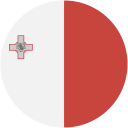 Malta
Malta
 Mexico
Mexico
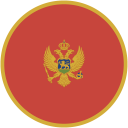 Montenegro
Montenegro
 Nepal
Nepal
 Netherlands
Netherlands
 New Zealand
New Zealand
 Pakistan
Pakistan
 Peru
Peru
 Poland
Poland
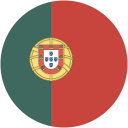 Portugal
Portugal
 Georgia
Georgia
 Reunion
Reunion
 Romania
Romania
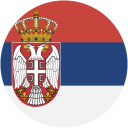 Serbia
Serbia
 Singapore
Singapore
 Slovakia
Slovakia
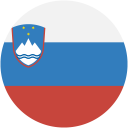 Slovenia
Slovenia
 South Africa
South Africa
 South Korea
South Korea
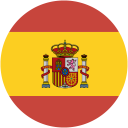 Spain
Spain
 Switzerland
Switzerland
 Taiwan
Taiwan
 Turkey
Turkey
 Ukraine
Ukraine
 Puerto Rico
Puerto Rico
 Honduras
Honduras
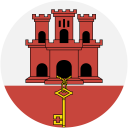 Gibraltar
Gibraltar



















